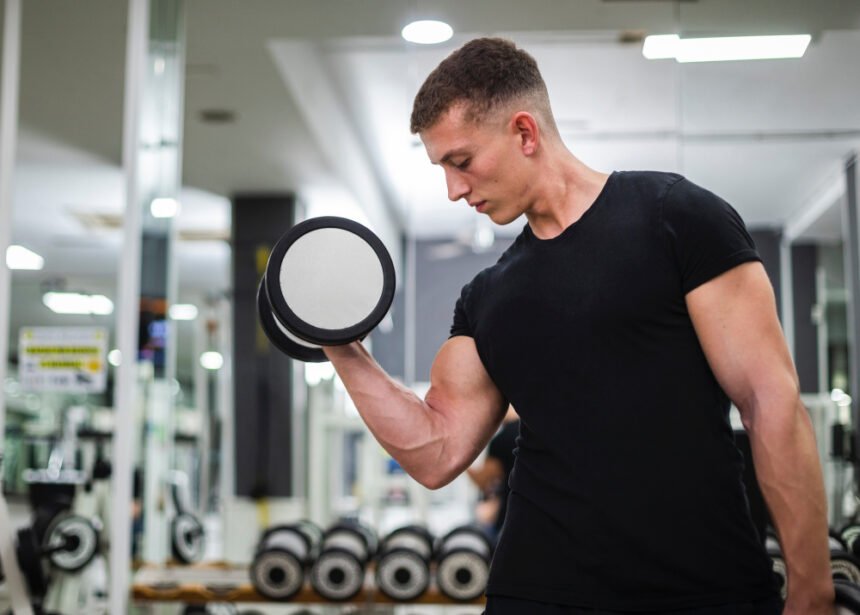One-Arm Standing Dumbbell Curl: Exercise Overview
The one-arm standing dumbbell curl is an effective isolation exercise that targets the biceps brachii, with secondary engagement of the brachialis and brachioradialis. By working one arm at a time, this movement helps address strength and size imbalances between the biceps, promoting symmetrical arm development. Ideal for building bicep strength and definition, this exercise allows for focused muscle activation and is suitable for aesthetic or functional goals. It can be incorporated into arm workouts, upper-body sessions, or full-body routines, making it a versatile choice for lifters aiming to enhance arm aesthetics and performance (Schoenfeld, 2010).
How to Perform the One-Arm Standing Dumbbell Curl
- Select a dumbbell of appropriate weight and stand with feet shoulder-width apart, holding the dumbbell in one hand with a supinated (palm-up) grip.
- Let the dumbbell hang at your side without touching your body, keeping your elbow close to your torso—this is your starting position.
- Slightly lift the dumbbell to engage the bicep, ensuring tension before beginning the movement.
- Starting with your weaker arm (often the left), curl the dumbbell upward by bending your elbow, bringing it as high as possible toward your shoulder.
- Pause briefly at the top, squeezing your bicep to maximize contraction.
- Slowly lower the dumbbell back to the starting position with control, keeping tension in the bicep and preventing the weight from resting against your body.
- Repeat for the desired number of repetitions, then switch to the other arm.
Tips for Optimal Performance
- Isolate the Biceps: Keep your body stationary, moving only your forearm to ensure the biceps do the work, avoiding momentum or swinging (McGill, 2010).
- Maintain Constant Tension: Avoid letting the dumbbell rest at the bottom or fully relax at the top to maximize time under tension, which enhances muscle growth (Schoenfeld, 2016).
- Start with the Weaker Arm: Begin with your less dominant side to ensure balanced effort and prevent the stronger arm from compensating.
- Control the Movement: Perform the curl and descent slowly to increase muscle activation and reduce the risk of injury.
- Breathe Properly: Exhale as you curl the dumbbell upward and inhale as you lower it to support controlled movement and muscle oxygenation.
- Keep Elbows Tucked: Position your elbow close to your torso throughout the movement to avoid shoulder involvement and maintain bicep focus.
Sculpting biceps with one-arm curls? Discover their place in our Ultimate Guide to Muscle Groups for arm training.








